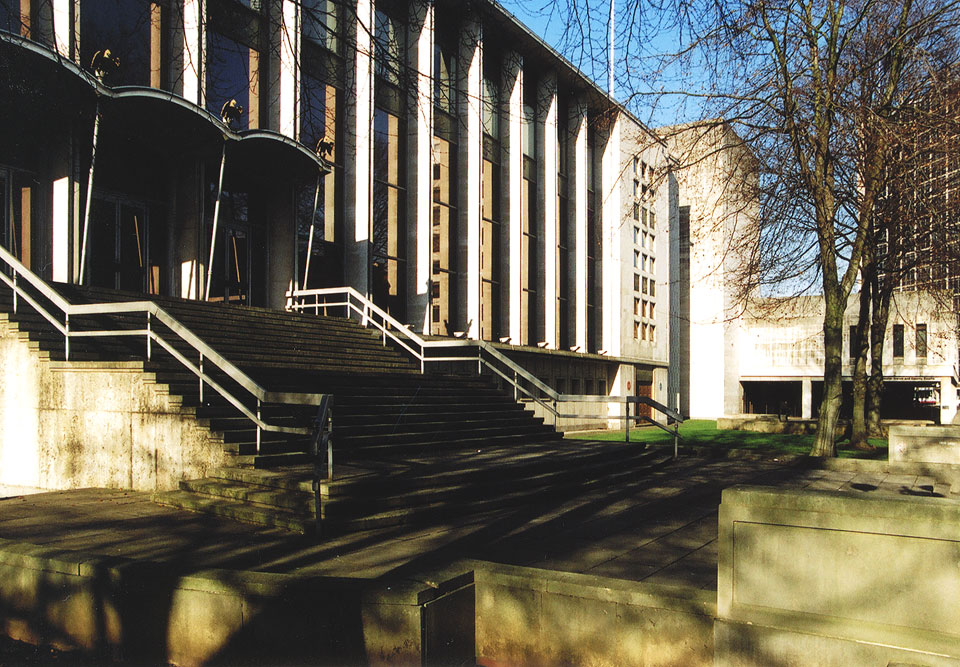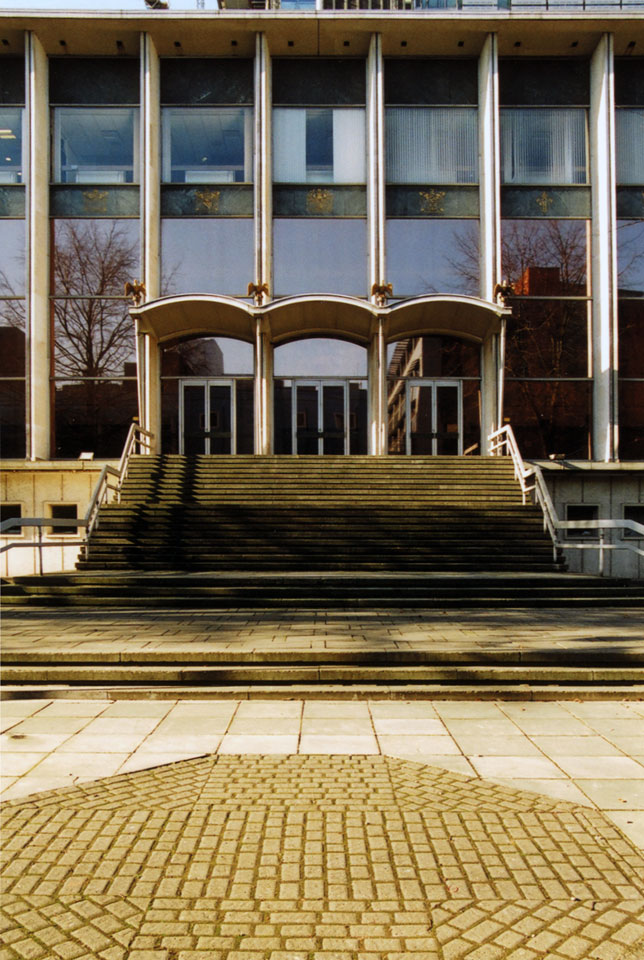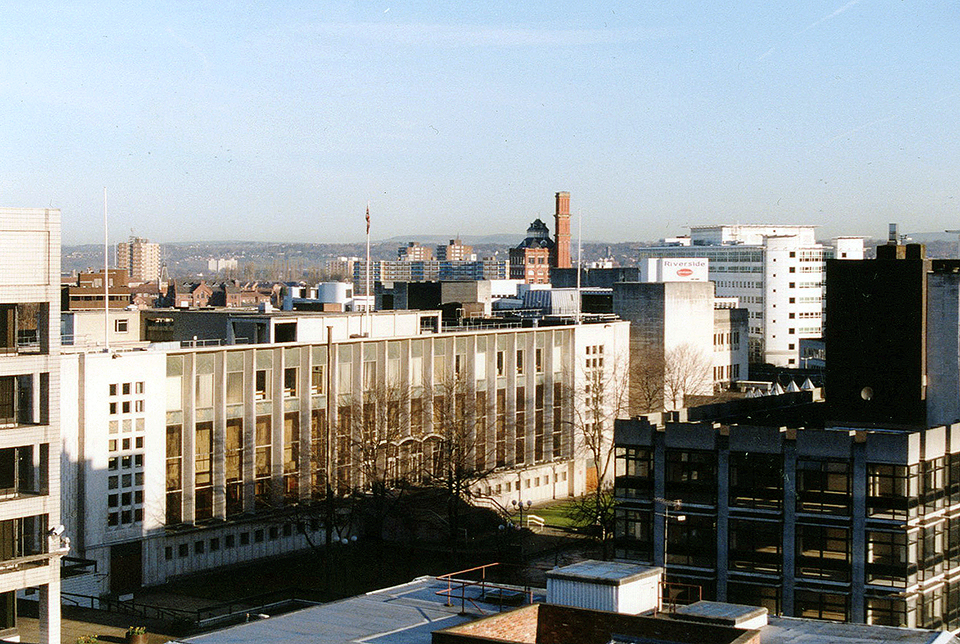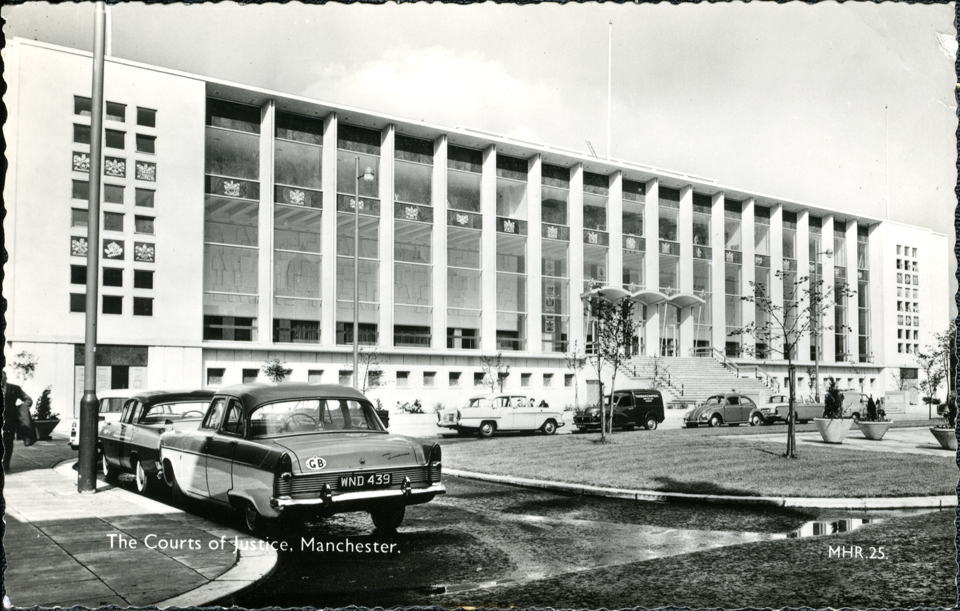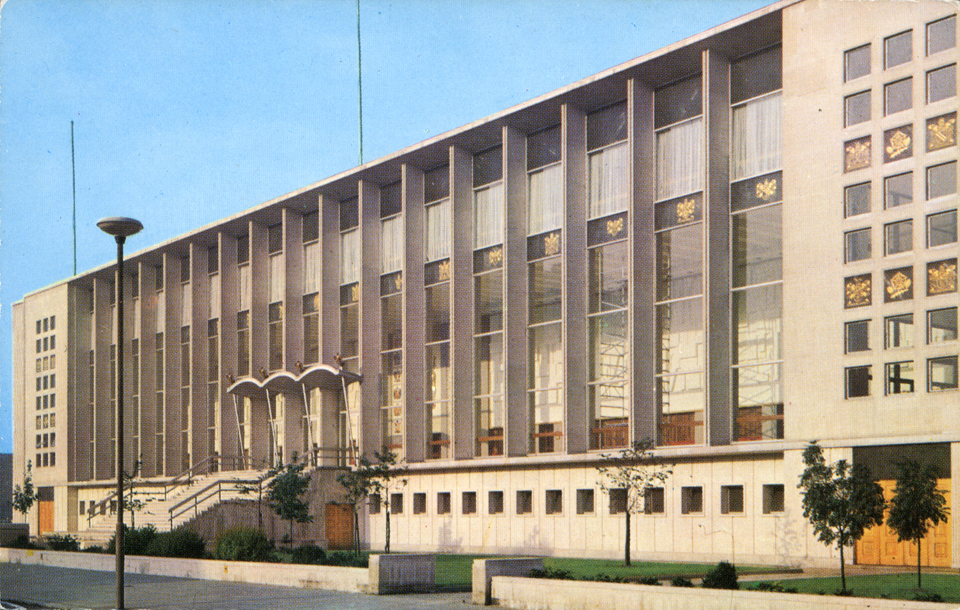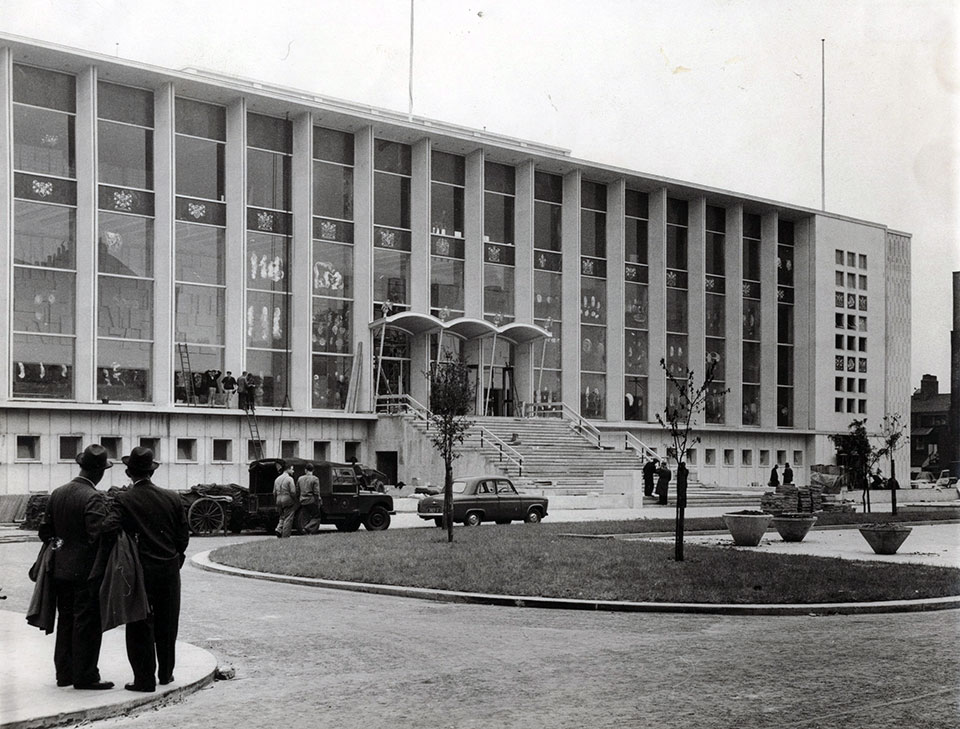Crown Court
1962
The Law Courts are a wholly civilised affair, stoic and middle class. The buildings in here attributed to L.C. Howitt are actually a testament to the quality that official architecture could achieve when given strong direction by a good city or county architect. Howitt’s successor Sydney G. Besant-Roberts turned to newer materials and forms. Whilst this building acknowledges the modern style, there is an undertone of classicism in the symmetry and the language of the colonnade and canopy rising from the solid ground floor that references a crepidoma. Heraldic motifs on slate spandrel panels cleverly disguise the floor edge and give the Portland Stone columns the appearance that they span an uninterrupted three storeys. This provides a much needed vertical emphasis to this long building. The courts used to sit facing Crown Square and lie at the end of an axial route from the Town Hall, as proposed in the 1945 Plan. It is the legacy of the Plan that really dictated the symmetry here; whilst zoned, in the modernist tradition, much of the planning from 1945 was classical in its application of axis, vistas and visual termini. The dynamics of this space have changed significantly during the development of Spinningfields. Crown Square has been eaten away by development and the axial relationships can no longer be clearly read. However, The sobriety of the court building still affects the atmosphere, despite its colourful cousin (Manchester Civil Justice Centre, Denton, Corker, Marshall, 2007) peering over its shoulder.
